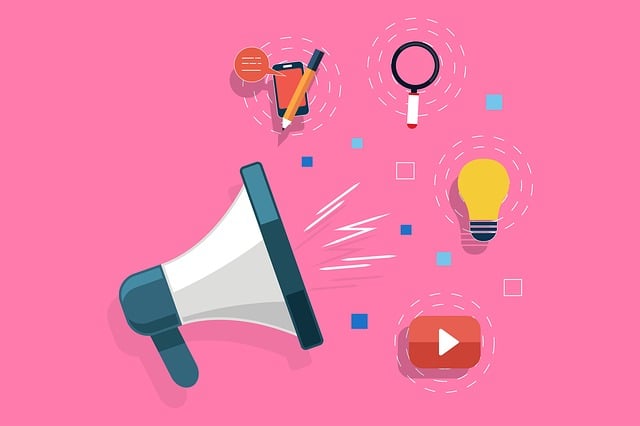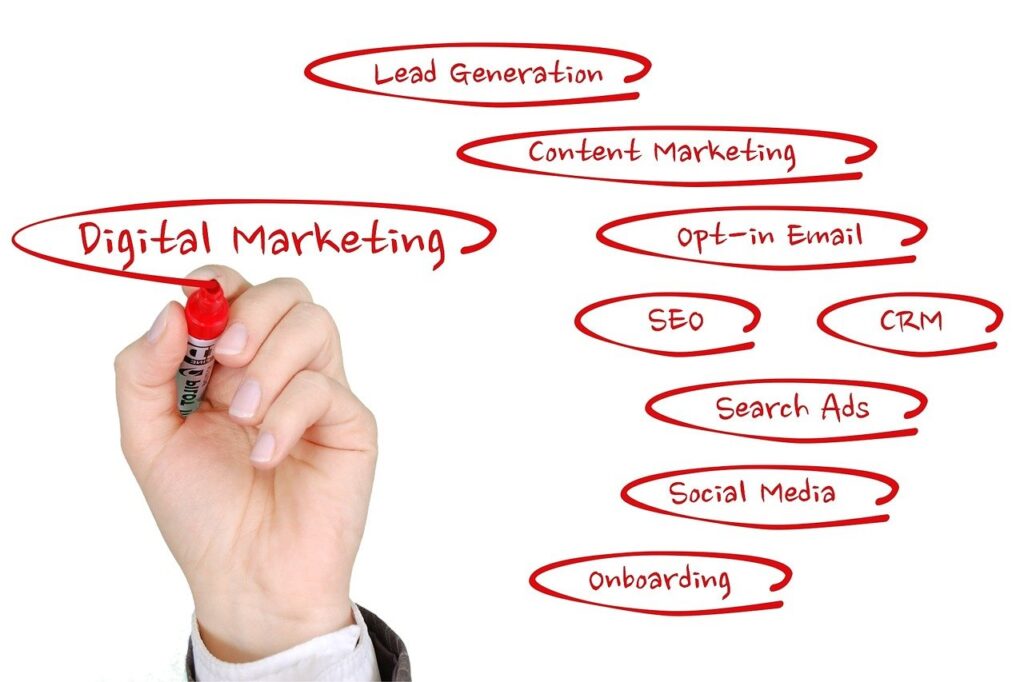Introduction
Marketing is the backbone of business success in today’s competitive landscape. Regardless of industry, an effective marketing strategy can be the difference between growth and stagnation. It’s how businesses build relationships with their audience, differentiate themselves from competitors, and drive revenue. Without a well-planned marketing approach, even the best products or services may go unnoticed.
In this article, we’ll dive into seven essential marketing strategies that have been proven to drive success. These techniques will help you attract and engage your target audience, convert leads into customers, and ultimately grow your business. Whether you’re a startup or an established brand, these strategies will provide a solid foundation for achieving your marketing goals.
1. Content Marketing
Content marketing is all about creating and distributing valuable, relevant, and consistent content to attract and engage a clearly defined audience. Instead of pushing your product or service directly, content marketing focuses on building trust with your audience by offering solutions to their problems. This could be in the form of blog posts, videos, infographics, eBooks, or social media content. When done right, content marketing not only generates leads but also positions your brand as an authority in your industry.
Actionable Tip:
Focus on creating high-quality, valuable content that addresses the needs and pain points of your target audience. Rather than producing content for the sake of it, ensure that each piece has a clear purpose and adds value. Research what your audience is searching for, and provide them with insights or solutions that they can’t easily find elsewhere.
Example:
Businesses often use a combination of blog posts, white papers, eBooks, and videos to educate their audience and establish themselves as thought leaders. For instance, a company selling fitness equipment might create a blog series about effective workout routines or a video guide on using their products for maximum benefit.
Stats:
“Companies that blog generate 67% more leads than those that don’t” highlights how impactful a well-planned content marketing strategy can be for businesses looking to boost their online presence.
2. Social Media Marketing
Social media marketing leverages platforms like Facebook, Instagram, LinkedIn, and Twitter to promote your brand, connect with your audience, and share engaging content. With billions of users on social media, it’s one of the most powerful tools for businesses to increase visibility, build brand loyalty, and interact with their customers in real-time. The key is to understand where your audience is most active and create tailored content that resonates with them.
Actionable Tip:
Choose the social media platforms that align with your audience and brand. Not every business needs to be on every platform. For example, Instagram is great for visually driven brands, while LinkedIn is more suitable for B2B companies. Engage actively by responding to comments, creating interactive posts like polls or stories, and sharing user-generated content. Avoid focusing only on promotions—social media is about building relationships.
Example:
A skincare brand using Instagram might showcase before-and-after photos of customers, share skincare tips via stories, and collaborate with influencers to promote their products. This not only builds awareness but also fosters a sense of community among followers.
Stats:
“90% of marketers say social media has increased their exposure,” proving how effective it can be in growing brand awareness and reaching a wider audience.

3. Search Engine Optimization (SEO)
Search Engine Optimization (SEO) is the process of optimizing your website and content to improve its visibility in search engine results pages (SERPs). SEO is essential because it drives organic (non-paid) traffic to your website. When done correctly, SEO ensures that your content ranks higher for relevant keywords, making it easier for potential customers to find you online. This is crucial because the majority of users don’t venture beyond the first page of search results, which makes ranking highly a key factor in increasing visibility and driving traffic.
Actionable Tip:
Optimize your content for both users and search engines by integrating relevant keywords naturally throughout your website. Create high-quality, informative content that meets the needs of your audience. Ensure your website is mobile-friendly and loads quickly, and focus on earning quality backlinks from reputable sources to boost your domain authority.
Example:
Brands like HubSpot have successfully relied on SEO strategies to become industry leaders. By providing valuable content that answers users’ search queries, HubSpot ranks highly for many business and marketing-related terms, driving substantial organic traffic.
Stats:
“75% of users never scroll past the first page of search results,” demonstrating how crucial it is to appear at the top of search rankings if you want to capture potential customers’ attention.
4. Email Marketing
Email marketing remains one of the most effective direct marketing channels for businesses of all sizes. With the ability to deliver personalized, targeted messages directly to your audience, email marketing helps drive conversions, nurture customer relationships, and increase retention. Unlike other forms of marketing, email provides a direct line to your audience’s inbox, making it a highly cost-effective tool for engaging with both new and existing customers.
Actionable Tip:
Personalize your emails to make them more relevant to your audience. Use segmentation to group your subscribers based on their interests, purchase history, or behavior, and send tailored content that speaks to their needs. Engaging subject lines, clear calls-to-action, and mobile-optimized designs will also boost engagement.
Example:
An eCommerce brand that sells clothing may use personalized email marketing to send targeted promotions based on a customer’s previous purchases or browsing history. This strategy can drive repeat purchases by sending recommendations that feel tailored to the individual’s tastes.
Stats:
“For every $1 spent on email marketing, the average return is $42,” highlighting the impressive ROI email campaigns can deliver when effectively implemented.
5. Influencer Marketing
Influencer marketing has rapidly become one of the most powerful tools for brands to reach their target audience in a more authentic and engaging way. By collaborating with influencers—individuals who have a significant following and influence over their audience—brands can increase their credibility, build trust, and reach niche markets. Influencers, especially micro-influencers (those with smaller but highly engaged followings), are often seen as more relatable and trustworthy, making them effective partners for driving awareness and sales.
Actionable Tip:
Focus on finding micro-influencers who are relevant to your niche and have an engaged and loyal following. These influencers may not have millions of followers, but their recommendations tend to feel more genuine and targeted. Work with them to create authentic, creative content that resonates with their audience and showcases your product or service in a natural way.
Example:
A beauty brand might partner with beauty bloggers or Instagram influencers to launch a new product. Through makeup tutorials, product reviews, and unboxing videos, influencers can help create buzz and drive conversions for the product launch.
Stats:
“63% of consumers trust influencers’ opinions over brand messages,” proving the power of influencer marketing in building credibility and trust with your target audience.
6. Paid Advertising (PPC and Social Ads)
Paid advertising, including Pay-Per-Click (PPC) campaigns and social media ads, is an essential strategy for businesses looking to quickly reach a larger audience. Unlike organic methods, paid ads allow you to target specific demographics, interests, and behaviors, ensuring that your content reaches the most relevant people. Whether it’s through Google Ads, Facebook, Instagram, or LinkedIn, paid advertising gives businesses the opportunity to drive immediate traffic, increase brand awareness, and generate leads or sales.
Actionable Tip:
Start with a small advertising budget and continuously refine your campaigns based on performance metrics. Use A/B testing to try different ad creatives, headlines, and targeting options to see what resonates best with your audience. This will allow you to optimize your spending and achieve better results over time.
Example:
A small business using Google Ads may set up a campaign targeting users searching for specific keywords related to their products. By tracking conversions and refining ad copy, they can increase the number of high-converting clicks, ultimately driving more sales.
Stats:
“Businesses make an average of $2 in revenue for every $1 they spend on Google Ads,” which demonstrates the potential return on investment when paid advertising is managed effectively.
7. Data Analytics and Tracking
Data analytics is the cornerstone of any successful marketing strategy. By tracking key performance indicators (KPIs) such as website traffic, conversion rates, and customer behavior, businesses can gain valuable insights into the effectiveness of their marketing efforts. Without data, it’s impossible to know what’s working and what needs to be improved. Using tools like Google Analytics, businesses can monitor campaign performance and make data-driven decisions to optimize their marketing strategies.
Actionable Tip:
Regularly analyze the data from your campaigns to refine your approach. Look at which channels and content are driving the most traffic and conversions, and make adjustments accordingly. Continuously test new strategies and measure their effectiveness to ensure ongoing improvement.
Example:
An online retailer might use Google Analytics to track where their traffic is coming from (e.g., organic search, paid ads, social media) and see which marketing channels are delivering the best ROI. Based on this data, they can allocate more resources to the most profitable channels.
Stats:
“Companies using data-driven marketing are six times more likely to be profitable,” showcasing the importance of data analysis in making informed marketing decisions.

Conclusion
These 7 essential marketing strategies—from content marketing and SEO to paid ads and data analytics—are proven techniques that can drive real business success. Each strategy plays a unique role in helping you reach your audience, build trust, and grow your business. Remember that marketing success isn’t achieved overnight. It requires a deep understanding of your audience, consistent effort, and a willingness to refine and optimize your approach based on performance data.
Now that you have the tools to craft a comprehensive strategy, it’s time to take action. Begin implementing these techniques, monitor your results, and refine your efforts to achieve long-term growth. For those just starting out, a free marketing plan can serve as a roadmap to help you stay focused and organized as you apply these proven strategies.

Juan is a Digital Advertising / SEM Specialist with over 10 years of experience with Google AdWords, Bing Ad Center, Facebook, LinkedIn, Google Analytics, HTML, and WordPress. He is a co-founder of Sheaf Media Group and has work in several online advertising projects for retail, automotive, and service industries. Additionally, Juan holds a bachelor’s degree in Psychology and has a deep interest in the science of human behavior which he attributes as the key factor for his success in the advertising world.


